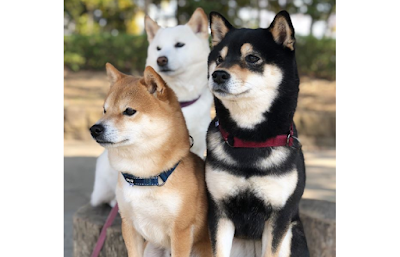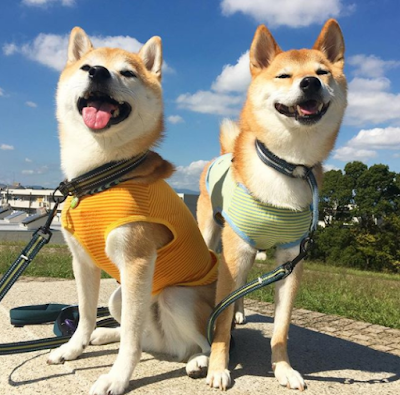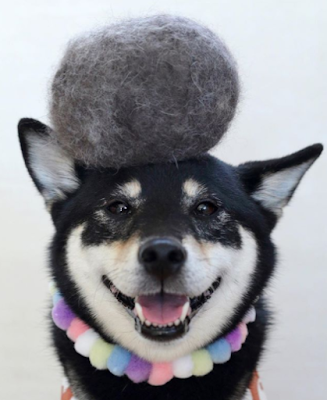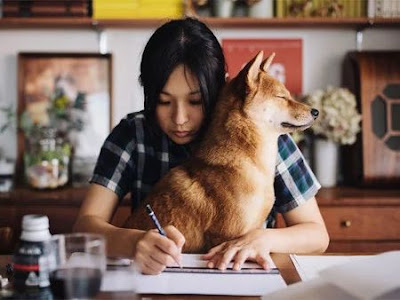The Shiba Inu Breed: Vocal, Cat-like, Hunting Dogs From Japan!
Definitely one of our favourite Dog breeds til date, and a internet-meme sensation for the younger generations. The rising trend and love for Shibas becomes obvious from sightings at Pet events locally too! As sprightly and bright-spirited Shiba Inus are, they might not be suitable for every individual— learn why as we uncover origins, history and personality match☺
Fun Fact #1 Shiba Inus are known to be one of the most vocal Dog breeds when not trained or entertained properly, comparable to that of Siberian Huskies!
Shiba Inu Dog Breed
As stated by our post header, Shiba Inu Dogs hail from none other than the land of the rising Sun, Japan. The word Inu translates to mean "Dog" in Japanese. And for Shiba, there are a few
speculations to how it came about. One of which is how it means “Brushwood”
in Japanese, referring to the colour of shrubs during Fall. Another meaning closely
relates to how Shiba translates to “Small” in the olden Nagano Dialect— a plausible thought, as Shiba Inus are the smallest amongst Japanese Spitz
type Dog breeds.
Like
many Dog breeds, Shiba Inus were originally bred for hunting purposes. They excelled in hunting small
preys such as Rabbits and Birds. During WWII, the Shiba Inu Dog breed were on the verge of
extinction, due to famine and wide spread of the
distemper disease amongst Dogs. Shiba Inus we see today are descendants from 3 sources— Shinshu Shiba, Mino Shiba, and San’in Shiba from 3 different
Japanese prefectures.
 |
| Source |
 |
| Source |
Appearance Of A Shiba Inu
Size — A Shiba
Inu is most recognizable for its Fox-like appearance, with a compact and
muscular body frame. Males grow to a height of 35 to 43 cm, and Females from 33 to 40 cm. The average weight of a Shiba Inu is
10 kgs.
Coat — Shibas have short coats throughout. The inner-coat is soft and dense, accompanied by a straight and stiff outer-coat.
Colour — Distinctive coat markings are known as Urajiro (white underside) in Japanese. Shibas possess this on the sides of muzzles, inner ears, belly, cheeks, chest, and even near their vents. Commonly colour variations are shades of Red, Black and Tan, Sesame (red with black tipped hair), and Cream.
Form — Tail is curled forward over their backs in an evenly, opened-brush manner. Thick pointed triangular ears sit on top a Fox-like face. Eyes are slightly almond-shaped and bright.
Coat — Shibas have short coats throughout. The inner-coat is soft and dense, accompanied by a straight and stiff outer-coat.
 |
| Source |
Form — Tail is curled forward over their backs in an evenly, opened-brush manner. Thick pointed triangular ears sit on top a Fox-like face. Eyes are slightly almond-shaped and bright.
Fun Fact #2 An all-white (Cream) Shiba Inu is not an acceptable shade for show, according to AKC, because a Japanese Shiba Inu standard includes having the distinctive “Urajiro” markings!
Grooming A Shiba Inu
Although they are playful and active, fastidious is what best describes a Shiba's self grooming habits. Because their hair and fur barely grows in length, their short coats are recommended to have no trimming nor shaving done— the coat is also a form of natural weather proofing in different climates. The only factor you should take note of is shedding period. Rid loose hairs and tangles by brushing and combing regularly. If need be, draw up a warm bath and thorough blow dry to speed-up the shedding process.
Swab out dirt build-up in ears and eyes with a Vet-approved cleanser and cotton balls. If you hear their nails begin to clack on the ground, its time for a trim! If you are unsure how to perform these tasks, approach a trusted Groomer and Veterinarian for professional services.
 |
| Source |
Personality Of A Shiba Inu
Proud, independent, fastidious and possibly dramatic Dog breed. Shibas are also often described as Cat-like due to their independent nature. A fun-loving individual will have no qualms welcoming a Shiba Inu into their homes. Get ready to be thoroughly entertained by their theatrical antics— fondly
nicknamed Shiba Scream. This entails a child-like cry during moments of extreme joy
(as a greeting when you’re home), and also if you happen to do
something they don’t fancy (i.e. taking a bath) ☺
 |
| Source |
Fun Fact #3 A Shiba Inu that has absolute proper care can live an average of 12 to 15 years, but did you know, that the record for 26 years belongs to a Shiba Inu named Pusuke! Pusuke lived in Japan with his owners. The longevity secret? — Regular daily walks, and lots of exercise!
You might also be interested in these:
Dog Obedience And Training: Classes And Schools To Attend In Singapore!
Dog Cafes: The Complete And Updated List Of Cafes In Singapore
*UPDATED* Dog Boarding In Singapore: The Largest List Of Dog Hotels And How To Pick One!
Can My Dog Eat This?: The Top 10 Dog Friendly Human Foods
Your Stories Can Be Heard Too
Got a Corgi of your own? Your voices are important to us and the Pets community! Our readers are encouraged to share their Pet-related reviews of a place and its services, experiences, even lifestyle tips and tricks to better our Pets lives, on our platform, one paw at a time. Be a part of an educational and informative Pets community because at ThePetsDialogue, your voices could make a huge difference on a global scale.
Write to us at [email protected] today!
Our website is a work in progress, however, if you did find our articles interesting please do feel free to share! For more Pet care tips and other Pet-related articles, head to www.thepetsdialogue.com ☺
Disclaimer
This article was written with informational purposes, as you know, we’d love to share our collective research and experiences as fellow Pet owners and lovers. It is not meant to alternate in any way as advice or diagnosis of Professionals.
ThePetsDialogue claims no credit for images posted on this article unless otherwise displayed/stated. All rights go to respective owners as mentioned. If you do not wish for your image(s) to appear here do drop us an e-mail and it will be removed promptly. If you do wish to use any of our original published information, you are welcome to contact us!




No comments:
Post a Comment